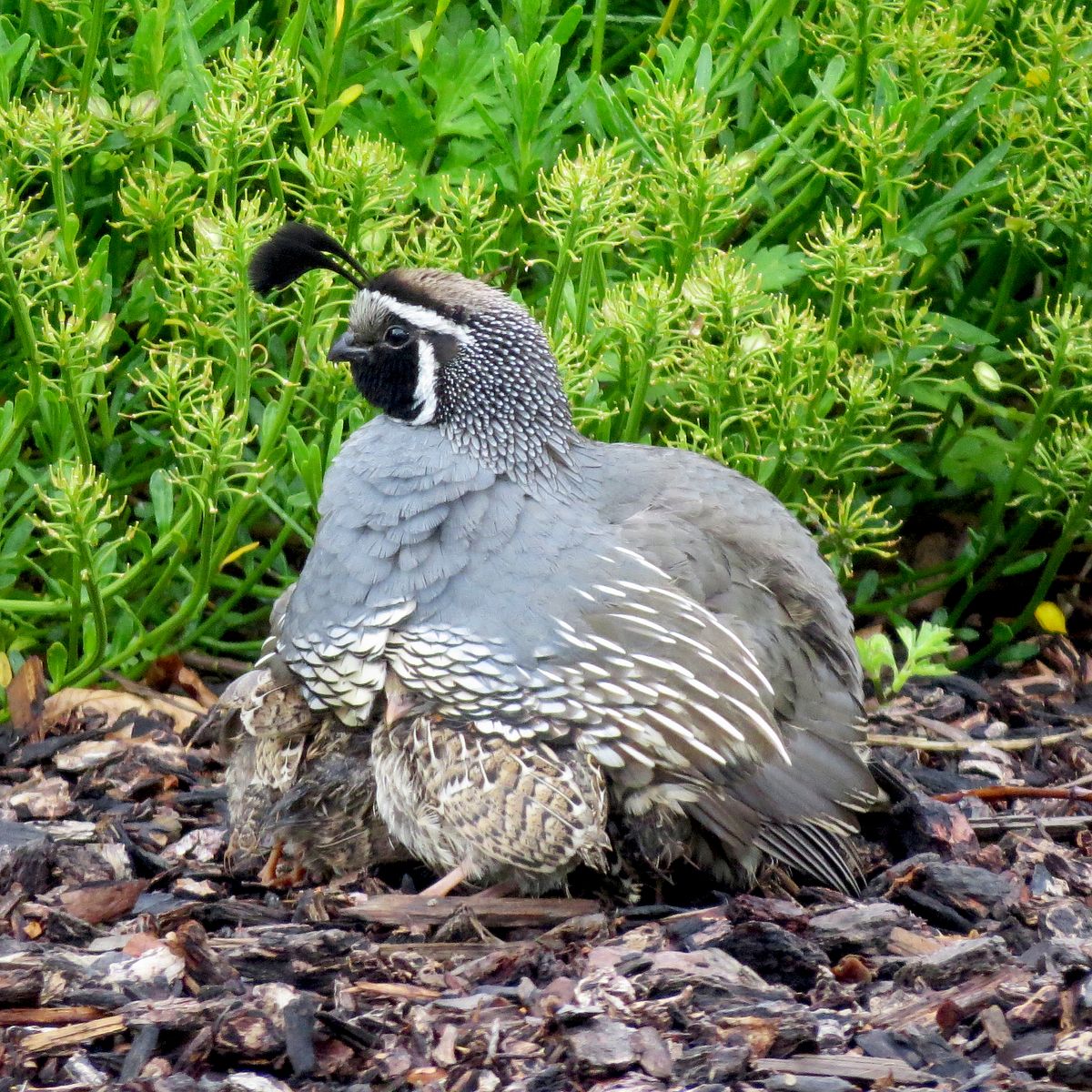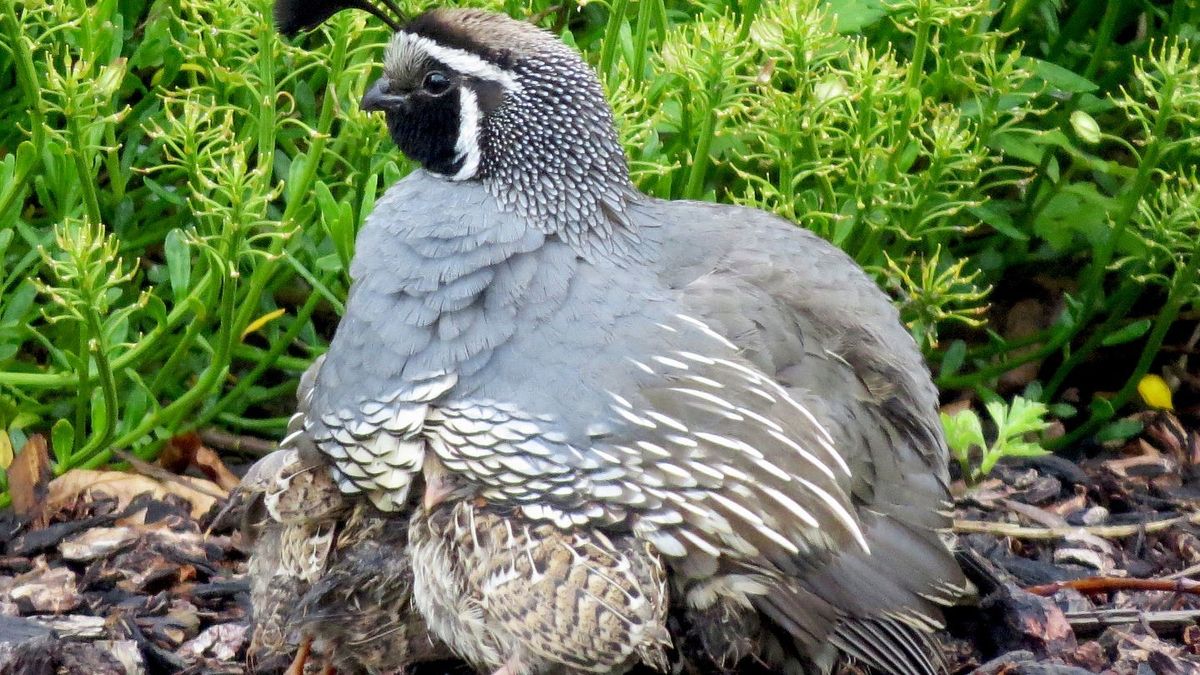In the Garden: Work to provide sanctuary for birds pays off
This male California quail protects his brood beneath his feathers during naptime. (Susan Mulvihill/For The Spokesman-Review)Buy a print of this photo
There’s a baby boom going on in our garden right now. Birds of all kinds are starting to reveal what they’ve been up to for the past few weeks.
Mountain chickadee babies are out and about begging for food from Mom and Dad. We’ve watched the parents making so many trips between our feeder and the branches where the young are perched. They pop a seed in their mouths and head right back to get more. Swallows and house wrens are busily feeding their young, as well.
A pair of cedar waxwings surprised us by building a nest in our hawthorn tree but soon decided that area of our back garden was too busy for them. We spotted the male grabbing mouthfuls of twigs from the nest they had started building just a week before so they could relocate to an area of the vegetable garden. Wait till they discover how often we’re out there, too, but we’ll do our best to tread lightly because it’s always a joy watching the young waxwings.
These days, the majority of our birdwatching activities revolves around California quail. The adults have been appearing with groups of little fluffballs in tow showing them around and teaching them important skills such as scratching in the dirt and keeping up with the group when it’s time to move on.
Each night as we’re finishing our dinner, we are treated to a sight even better than that. When baby quails need a nap, they snuggle underneath their parents’ wings for a rejuvenating snooze. Lately, a quail family has decided the perfect spot for this is on a path right in front of our daylily bed, which is easily visible from our dinner table. Wow, dinner and a show.
It’s so much fun seeing their little legs sticking out from under the wings, and I’ve noticed the parents usually take the opportunity to doze a bit, too. A male quail that has lost his mate is successfully rearing his brood and brings them to the same spot for their afternoon nap. It is heartwarming to witness the tender care the genders of quail lavish on their young.
Bill and I feel fortunate to get to watch all of our bird visitors. When we purchased our 5-acre property 30 years ago, it was just an open field.
As avid birdwatchers, we knew birds wouldn’t stay long if they didn’t have places to hide from predators.
Establishing a windbreak was the first order of business. We planted a mix of Douglas firs, ponderosa pines, blue spruce and aspens – all of which provide spots for nesting birds. Then we started closing in the area surrounding our house with native shrubs such as serviceberry, chokecherry, oceanspray, golden currant, snowberry, American cranberry bush and ninebark. These plants grow at varying heights, provide shelter from the weather and predators, and most produce berries that feed a variety of birds.
We built a large pond with a small waterfall since we knew water sources would attract them. Birds frequently visit it and our two birdbaths. They need that water to drink and bathe in order to stay healthy.
We always hang a few feeders for them, which hold black-oil sunflower seeds for many types of birds: Nyjer thistle for goldfinches, pine siskins and redpolls during the winter months and a year-round supply of suet for woodpeckers, catbirds and grosbeaks.
Watching birds is a relaxing and educational pastime. Creating a haven for them has been a delightful journey.
Contact Susan Mulvihill at susan@susansinthegarden.com. Watch this week’s “Everyone Can Grow a Garden” video at youtube.com/susansinthegarden.

